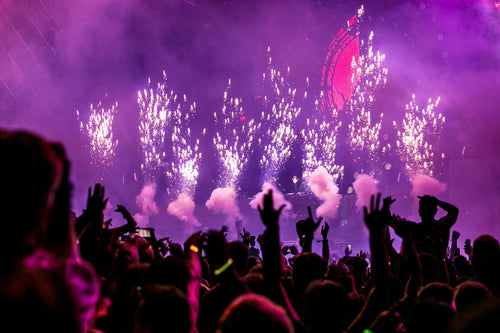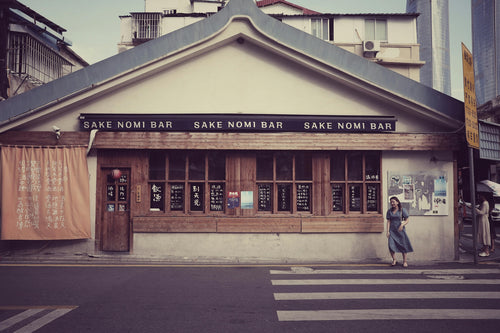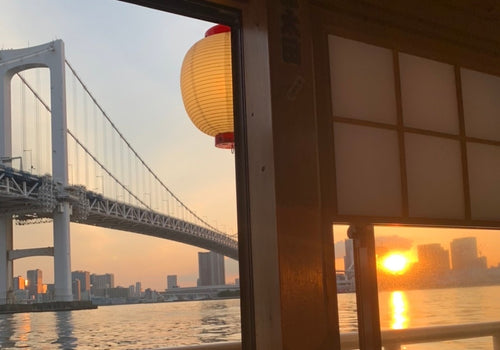
Japan’s Kimono Heritage: Symbolism, Style, and Where to See
The kimono, Japan’s traditional garment, is a beautiful and symbolic representation of Japanese culture. From its intricate patterns and colors to the way it’s worn, the kimono embodies centuries of history, tradition, and artistry. Originally a daily garment for men and women, the kimono has evolved into a cultural icon, often worn for special occasions and ceremonies. Each kimono tells a story through its colors, patterns, and fabric, offering a glimpse into Japanese heritage and aesthetic values.
This guide explores the history, symbolism, and different styles of kimono, as well as the best places in Japan to experience the beauty of this timeless garment firsthand.
Contents
2. Symbolism in Colors and Patterns
4. Essential Kimono Accessories
5. Kimono in Ceremonies and Festivals
1. The History of the Kimono
The kimono has a long history that dates back over a thousand years to Japan’s Heian period (794–1185). Initially influenced by Chinese garments, the kimono evolved during the Edo period (1603–1868) into the T-shaped garment we recognize today. Kimonos were once worn daily by all classes, with differences in materials, patterns, and styles reflecting social status and season.
In the Meiji era, Western clothing became more popular, and the kimono gradually became reserved for special occasions. Today, the kimono is a cherished cultural symbol, worn primarily during ceremonies, festivals, and traditional events. Preserving and wearing kimono remains a way to connect with Japan’s cultural roots.
2. Symbolism in Colors and Patterns
Each kimono color and pattern holds meaning, often reflecting the wearer’s age, status, season, or occasion. Bright colors and bold designs are traditionally worn by young women, while more subdued patterns suit older adults. Seasonal motifs, such as cherry blossoms in spring or maple leaves in autumn, showcase the deep connection between nature and Japanese aesthetics.
Common symbols include cranes, which represent longevity; waves, symbolizing resilience; and pine trees, denoting endurance. The combination of these elements allows the kimono to convey personal, familial, or cultural significance, making each garment a unique expression of identity and values.
3. Different Styles of Kimono
There are many styles of kimono, each suited to different occasions and reflecting varying levels of formality. Some of the most well-known styles include:
Furisode
Recognizable by its long, flowing sleeves, the furisode is a vibrant kimono worn by unmarried women, often at coming-of-age ceremonies and weddings. It symbolizes youth and celebration, with colorful designs and intricate patterns.
Tomesode
The tomesode is a formal kimono for married women, characterized by shorter sleeves and often featuring patterns only below the waist. Black tomesode, adorned with family crests, is typically worn at formal events like weddings.
Yukata
Yukata is a casual summer kimono made from lightweight cotton. Worn at summer festivals and casual gatherings, it is simpler in design and easy to wear, often featuring bright, floral patterns suited for warm weather.
Homongi
The homongi, or “visiting wear,” is worn by both married and unmarried women for semi-formal occasions. It often features patterns flowing over the shoulders and sleeves, making it a versatile and elegant choice for events.
4. Essential Kimono Accessories
Several accessories complete the kimono, each playing an important role in its appearance and functionality. Key accessories include:
Obi
The obi is a wide sash that secures the kimono at the waist. The style, color, and tying of the obi can vary, with certain knots and lengths indicating different levels of formality.
Obiage and Obijime
Obiage is a decorative cloth placed above the obi, while obijime is a cord used to secure the obi knot. Together, these accessories add color and detail to the ensemble.
Zori and Geta
Zori are traditional sandals worn with formal kimono, often paired with tabi socks. Geta are wooden sandals worn with yukata, providing a casual touch suited to festivals.
5. Kimono in Ceremonies and Festivals
Kimonos are worn at various ceremonies and festivals, each occasion reflecting the garment’s cultural importance. For example, during the Seijin-no-Hi (Coming of Age Day) celebration, young women wear furisode to mark their entry into adulthood. Similarly, in weddings, the bride often wears a shiromuku, an all-white kimono symbolizing purity and new beginnings.
Seasonal festivals, such as Gion Matsuri in Kyoto or Tanabata in Sendai, see participants donning colorful yukata, creating a vibrant celebration of Japanese heritage. These events provide a vivid display of traditional kimono and serve as an opportunity for people to connect with their culture.
6. Where to See Kimono Culture in Japan
To experience the beauty of kimono firsthand, there are numerous places in Japan where visitors can observe or even wear this traditional attire:
Kyoto: Gion District
Kyoto, especially the Gion district, is one of the best places to see kimono culture alive and well. Many geisha and maiko wear traditional kimono, and visitors can rent kimono to stroll through the historic streets, enhancing the cultural experience.
Tokyo: Asakusa and Kimono Museums
Asakusa offers numerous kimono rental shops where visitors can dress in traditional attire while exploring Senso-ji Temple and nearby shrines. Tokyo also has museums, such as the Tokyo National Museum, which exhibits traditional kimonos and textiles.
Kanazawa: Kaga Yuzen Silk Dyeing
Kanazawa is known for Kaga Yuzen, a traditional silk dyeing technique used in kimono production. Visitors can learn about the process, view exhibitions, or even try creating their own dyed fabrics, gaining insight into the artistry of kimono making.
Kimono Festivals
Annual kimono festivals, such as the Shichi-Go-San Festival for children or the Kimono Salone in Tokyo, offer unique opportunities to see a wide variety of kimonos in one place. These festivals celebrate kimono culture and showcase the diversity of styles and designs.
7. Conclusion: Appreciating Japan’s Kimono Heritage
The kimono is far more than a garment; it is a symbol of Japan’s history, art, and culture. Each kimono tells a story, whether through its seasonal patterns, family crests, or the occasion on which it’s worn. By understanding the kimono’s history, symbolism, and role in modern Japan, visitors can gain a deeper appreciation for this timeless tradition.
Whether you’re exploring a museum exhibit, attending a festival, or renting a kimono for a day, experiencing the beauty and significance of kimono culture is an unforgettable part of any visit to Japan. Embracing the kimono means embracing a piece of Japan’s cultural heart.
Share
You may also like
-

Visiting Japan’s Love Hotel Districts: What to Expect
Japan’s love hotel districts are famous for their unique and fascinating blend of privacy, creativity, and a touch of...
-

Top 10 Late-Night Dining Spots in Tokyo’s 24-Hour Cafes
Tokyo’s vibrant nightlife extends well beyond bars and nightclubs, with a thriving late-night dining culture tha...
-

Best Night Tours in Tokyo for After-Dark Adventures
Tokyo’s nightlife is renowned for its energy, vibrancy, and unique blend of traditional and modern experiences. From ...
-

Japan’s Late-Night Food Culture: 8 Best Street Eats
Japan’s late-night food culture is a vibrant experience, especially in bustling cities like Tokyo and Osaka, where de...
-

7 Rooftop Bars in Tokyo for Stunning Views
Tokyo’s rooftop bars offer some of the best ways to soak in the city’s skyline while enjoying drinks, atmosphere, and...
-

10 Best Nightclubs in Tokyo for Dancing and Music Lovers
Tokyo's nightlife is renowned for its variety and energy, with nightclubs that range from high-energy dance floors to...
-

8 Themed Bars and Cafes You Need to Visit in Tokyo
Tokyo is famous for its creative and quirky themed bars and cafes, offering immersive experiences for locals and...
-

Tokyo Nightlife Guide: Shinjuku, Shibuya, and Roppongi Highlights
Tokyo’s nightlife is legendary, offering a mix of vibrant energy, entertainment, and unique experiences in some of it...
-

7 Best Japanese Sake Bars in Tokyo
Tokyo is home to some of Japan’s best sake bars, offering both locals and visitors an opportunity to explore the...
-

Top 6 Observation Decks in Tokyo for Scenic Views
Tokyo’s observation decks offer some of the best panoramic views of the city, giving visitors a chance to see th...
-

Night Cruises in Tokyo: Enjoy the City Views
Tokyo’s skyline is mesmerizing at any time, but experiencing it from the water on a night cruise adds a magical ...
-

Roppongi Art and Nightlife Guide
Roppongi is one of Tokyo’s most vibrant districts, known for its lively nightlife, sophisticated art scene, and ...
-

Nightlife Guide to Shinjuku Kabukicho
Shinjuku’s Kabukicho district, known as Tokyo’s “Sleepless Town,” is the center of nightlife in Tokyo. Renowned ...
-

6 Best Night View Spots in Tokyo
Tokyo at night is a breathtaking spectacle, with illuminated skyscrapers, iconic landmarks, and bustling streets that...
-

Top 12 Sake Breweries in Japan for Tasting and Tours
Japan’s sake culture is celebrated around the world for its depth, complexity, and rich history. Sake, or nihons...
-

How to Enjoy a Night at a Japanese Izakaya
Japanese izakayas are casual, lively spots where locals gather after work to enjoy drinks, share small plates, a...
-

Exploring Karaoke Culture in Japan: 8 Best Places to Sing
Karaoke is an integral part of Japanese culture, offering a fun and entertaining way for friends, family, and even co...
-

5 recommended bars in Golden Gai
Golden Gai, nestled in the heart of Tokyo’s Shinjuku district, is one of the city’s most iconic bar districts. Known ...
-

10 Japanese Gardens You Should Visit for Tranquility
Japanese gardens are renowned for their beauty, tranquility, and intricate designs that reflect harmony with nature. ...
-

Etiquette Essentials for Visitors to Japan
Japan’s culture is rich in respect, politeness, and consideration, making etiquette an essential part of daily l...
-

7 Best Places to Discover Japan’s Samurai History
Japan’s samurai history is one of honor, skill, and deep cultural influence, stretching back centuries and leaving an...
-

Geisha Culture in Japan: Myths and Realities
The world of geisha, Japan’s skilled performers and keepers of traditional arts, has long intrigued people around th...
-

Japan’s Unique Architecture: Top 8 Traditional and Modern Landmarks
Japan is renowned for its unique blend of ancient architectural heritage and cutting-edge modern designs. From c...
-

10 Traditional Japanese Festivals (Matsuri) You Can’t Miss
Japanese festivals, or *matsuri*, are vibrant celebrations of cultural heritage, featuring elaborate costumes, l...
-

Japan’s Three Great Onsen: A Guide to Famous Hot Springs
Japan is famous for its natural hot springs, or *onsen* (温泉), offering visitors a unique opportunity to relax and rej...
-

Japanese Art Exploration: Best Spots to Enjoy Art in Japan
Japan is a country rich in artistic heritage, from centuries-old traditional crafts to modern, innovative instal...
-

Guide to Japan’s Fireworks Festivals: When and Where to Go
Japan’s summer fireworks festivals, known as "hanabi taikai" (花火大会), are among the most anticipated events in th...
-

Where to Experience Ramen-Making Classes in Japan
Ramen is one of Japan’s most beloved dishes, with countless regional styles and flavors that attract food lovers from...
-

Power Spot Tours: Japan’s Famous Temples and Shrines
Japan is a land steeped in spiritual history, and visiting its temples and shrines provides not only a glimpse i...
-

UNESCO World Heritage Site Tour Guide in Japan
Japan is home to numerous UNESCO World Heritage Sites, each offering a glimpse into the country’s rich cultural herit...
-

5 Famous Japanese Castles: History and Highlights
Japan is home to some of the most beautiful and historically significant castles in the world. Built during the feuda...
-

10 Unique Drinks to Try from Japanese Vending Machines
Japan is famous for its vending machines, offering an incredible variety of drinks that go beyond just soft drinks an...
-

Tokyo Market Guide: Exploring Tsukiji and Toyosu Markets
Tokyo's Tsukiji and Toyosu Markets are must-visit spots for food lovers and anyone interested in Japan’s rich culinar...
-

Experiencing Traditional Tea Ceremony in Tokyo
The Japanese tea ceremony, or "chanoyu," is a cultural experience steeped in tradition, aesthetics, and mindfulness....
-

Top 7 Cherry Blossom Viewing Locations in Tokyo
Springtime in Tokyo is synonymous with the cherry blossom season, a breathtaking period when the city’s parks, rivers...
-

What is Onsen? A Guide to History, Benefits, and Etiquette
Onsen, Japan’s cherished hot spring culture, offers a unique blend of relaxation, scenic beauty, and deep-rooted trad...
-

What is Sake? Its Production Method and History
Sake is a traditional Japanese alcoholic beverage made from fermented rice. It has been enjoyed in Japan for over a t...
-

8 hot springs with beautiful scenery near Tokyo
Tokyo is a bustling metropolis, but just outside the city are some of Japan's most serene hot springs, or onsens, off...
-

Top 10 museum to visit in Tokyo
Tokyo is home to a diverse range of museums that cater to all interests, from art and history to technology and pop c...
-

9 Best Hot Spring and Bathhouse in Tokyo
Tokyo is known for its vibrant urban energy, but it's also a fantastic place to relax and rejuvenate in hot springs (...
-

15 Famous Temples and Shrines to Visit near Tokyo
Tokyo and its surrounding areas are home to many famous temples and shrines that showcase Japan's rich spiritual and ...









































